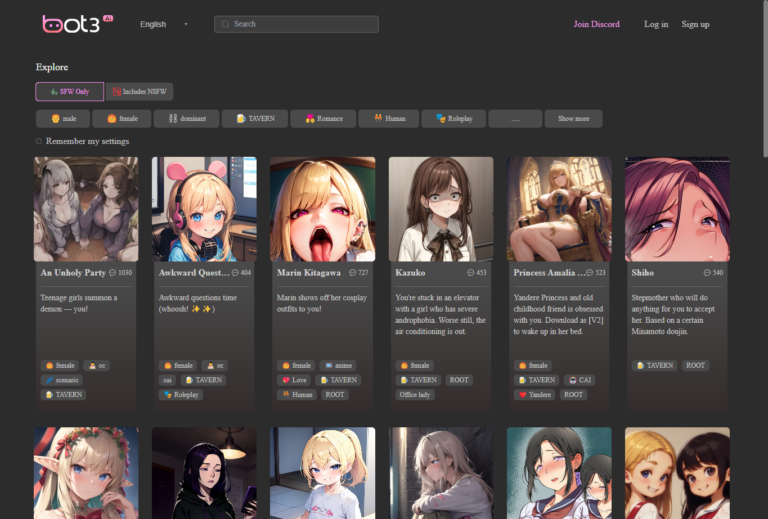
If you’re looking to take your business to the next level, then building GPTs (Generative Pre-trained Transformers) might be just the thing for you. These powerful language models have the potential to revolutionize your business operations, enhancing customer experience, streamlining processes, and boosting productivity. By harnessing the power of GPTs, you can create dynamic chatbots, generate engaging content, and even automate tasks. In this article, we’ll explore how building GPTs can unlock a world of opportunities for your business, empowering you to stay ahead of the competition in today’s fast-paced digital landscape.
Understanding GPTs
What are GPTs?
GPTs, or Generative Pre-trained Transformers, are a type of artificial intelligence (AI) model that is trained to generate human-like text based on a given prompt. These models utilize advanced machine learning techniques, particularly deep learning, to understand patterns in textual data and produce coherent and contextually relevant responses. GPTs have revolutionized the field of natural language processing (NLP) and have found extensive applications in various industries.
How GPTs work
GPTs work by employing a deep neural network architecture known as transformers. Transformers allow the model to process and analyze the relationships between words and sentences in a given text, enabling it to generate meaningful responses. GPTs follow a two-step process: pre-training and fine-tuning. During pre-training, the model learns on a large corpus of publicly available text data, such as articles from the internet. Then, during fine-tuning, the model is trained on specific data related to the desired application, allowing it to generate targeted and contextually appropriate text.
Benefits of using GPTs
The use of GPTs in business brings several benefits. Firstly, they provide a cost-effective solution for content creation and writing. GPTs can generate high-quality, engaging content in a fraction of the time it would take for a human writer. Additionally, GPTs can enhance customer support and chatbot experiences by providing instant and accurate responses to customer inquiries. They can also assist in data analysis and insights, helping businesses make informed decisions based on the patterns and trends identified in large datasets. Overall, GPTs serve as an efficient tool to streamline business processes and improve productivity.
Applications of GPTs in Business
Content Creation and Writing
GPTs offer immense potential in content creation and writing for businesses. From creating blog posts and social media updates to drafting marketing materials, GPTs can generate relevant and engaging content that captures the attention of target audiences. By feeding prompts and keywords to the GPT, businesses can obtain well-written content quickly, saving time and resources. GPTs can also assist in maintaining consistent brand voice and tone across various communication channels, ensuring a cohesive and recognizable image for the business.
Customer Support and Chatbots
Another valuable application of GPTs in business is in customer support and chatbot services. GPTs can be trained to understand and respond to customer inquiries, providing accurate and timely assistance. This improves customer satisfaction by addressing their queries and concerns promptly, even outside of regular business hours. By utilizing GPTs for customer support, businesses can enhance their efficiency and scale their operations without the need for additional human resources.
Data Analysis and Insights
GPTs can play a significant role in data analysis and extracting insights from large datasets. By processing vast amounts of structured and unstructured data, GPTs can identify patterns, correlations, and trends that might go unnoticed by human analysts. This enables businesses to make data-driven decisions, optimize processes, and uncover hidden opportunities. Whether it’s analyzing market trends, customer behavior, or internal operations, GPTs can provide valuable insights that guide strategic planning and drive business growth.

Building Your Own GPT
Choosing the Right Framework
When building your own GPT, it is crucial to choose the right framework that suits your business needs. Popular frameworks like OpenAI’s GPT, Hugging Face’s Transformers, and Google’s BERT provide pre-trained models and easy-to-use libraries that simplify the development process. Consider factors such as the required computational resources, integration capabilities, and compatibility with the programming languages and frameworks used in your business environment.
Training with Relevant Data
To ensure the GPT understands the specific context and domain of your business, it needs to be trained with relevant data. The training data should ideally consist of a diverse range of texts that mirror the language and context used within your company or industry. Curating a dataset that covers various use cases and customer scenarios will help the GPT produce accurate and relevant results.
Fine-tuning for Business Needs
After pre-training on a large corpus of data, fine-tuning the GPT with business-specific data is essential. This step allows the model to adapt and generate content that aligns with your business goals and guidelines. Fine-tuning for specific use cases, such as drafting marketing emails or providing technical support, provides the GPT with the necessary domain knowledge to generate contextually appropriate responses.
Integration and Implementation
APIs and Services
Integrating GPTs into your business environment can be facilitated through the use of APIs (Application Programming Interfaces) and services offered by AI platforms. By leveraging the API endpoints provided by GPT frameworks, businesses can easily integrate the GPT functionality into their existing applications and workflows. These APIs allow for seamless communication between the GPT model and your systems, enabling efficient generation of text-based outputs.
Developer Resources and Support
When implementing GPTs, having access to reliable developer resources and support is crucial. GPT frameworks typically provide extensive documentation, tutorials, and community forums that offer guidance and answer common implementation questions. Leveraging these resources can accelerate the development process, troubleshoot potential issues, and ensure a smooth integration of GPT capabilities into your business operations.
Quality Assurance and Testing
To ensure the successful integration and implementation of GPTs, thorough quality assurance and testing are paramount. Prior to deploying GPTs in a live environment, rigorous testing should be conducted to validate the accuracy and reliability of the generated outputs. Investing time and resources into testing different scenarios and gathering user feedback enables businesses to fine-tune the GPT implementation and optimize its performance.

Ensuring Ethical and Responsible Use
Addressing Bias and Fairness
A critical consideration when using GPTs is addressing bias and ensuring fairness in the generated content. GPTs learn from the data they are trained on, and if the training data contains biased or discriminatory information, the generated outputs can perpetuate such biases. It is essential for businesses to carefully curate and review training datasets, remove any biased content, and continuously monitor and address bias during the fine-tuning process to ensure fair and unbiased results.
Monitoring and Compliance
To maintain ethical and responsible use of GPTs, ongoing monitoring and compliance are necessary. Regularly reviewing the generated outputs and user feedback helps identify and rectify any issues or concerns regarding the quality and appropriateness of the content. Additionally, staying informed about the latest ethical guidelines and regulations related to AI and NLP ensures compliance with industry standards and legal requirements.
Transparency and Explainability
To build trust and foster transparency, businesses should strive to make the use of GPTs transparent and explainable. Providing clear information to users about the presence and purpose of GPTs, as well as disclosing their limitations, helps establish a transparent relationship. Additionally, ensuring users have access to explanations or justifications for the generated content further enhances transparency and user confidence.
Challenges and Limitations
Lack of Data and Training Resources
One of the challenges businesses may face when building GPTs is the availability of relevant and high-quality training data. Training a GPT model requires a substantial amount of diverse and representative data, which may not always be readily accessible. Collecting and preparing suitable training data can be time-consuming and resource-intensive, requiring significant effort in data gathering and labeling.
Risk of Overfitting and Misinterpretation
GPTs, like any machine learning model, are susceptible to overfitting and misinterpretation. Overfitting occurs when the GPT becomes too specialized in the training data and fails to generalize well to new inputs. To mitigate this risk, businesses need to ensure a balanced dataset during training and regularly evaluate the model’s performance on unseen data. Additionally, human oversight and continuous monitoring are crucial to identify and correct any misinterpretations or erroneous outputs.
Continuous Improvement and Adaptation
GPTs are continually evolving, and it is essential for businesses to keep up with the latest advancements and updates in the field. The landscape of NLP is rapidly changing, and staying ahead requires a commitment to continuous improvement and adaptation. Regularly reevaluating and upgrading the GPT implementation, keeping up with research and best practices, and seeking feedback from users are key strategies to overcome challenges and maximize the potential of GPTs.
The Future of GPTs in Business
Increasing Adoption and Integration
As businesses recognize the value and potential of GPTs, their adoption and integration are expected to increase significantly. GPTs have already demonstrated their effectiveness in various industries, and their applications continue to expand. With advancements in technology and increased availability of training data, GPTs will become more accessible and customizable for businesses across different domains.
Advancements in Natural Language Processing
The future of GPTs in business is closely tied to the advancements in the field of natural language processing. Ongoing research and innovation in areas such as sentiment analysis, entity recognition, and document summarization will enhance the capabilities of GPTs and open up new possibilities for their use. Businesses can expect more accurate, nuanced, and context-aware responses from GPTs as NLP algorithms continue to evolve.
Potential Disruptions and Transformations
The widespread adoption of GPTs in business will inevitably bring about significant disruptions and transformations. GPTs have the potential to automate various tasks traditionally performed by humans, leading to shifts in job roles and responsibilities. Moreover, GPTs can enable personalized and tailored customer experiences, revolutionizing industries such as marketing, healthcare, and e-commerce. Embracing GPTs and harnessing their power can position businesses at the forefront of innovation and competitiveness.
Real-World Examples
GPTs in Marketing and Advertising
In the field of marketing and advertising, GPTs can be utilized to generate compelling and persuasive ad copies, email marketing campaigns, and social media content. By understanding customer preferences and leveraging market research data, GPTs can produce targeted and effective marketing materials that drive engagement and conversions. GPTs can also assist in automating keyword research, content optimization, and competitor analysis, providing valuable insights for marketing strategies.
GPTs in Healthcare and Medicine
GPTs have immense potential in healthcare and medicine by helping physicians and healthcare professionals in diagnoses, treatment planning, and patient engagement. GPTs can analyze medical records, research papers, and clinical guidelines to offer customized recommendations and insights. Through chatbots and virtual assistants powered by GPTs, patients can receive accurate and reliable information, schedule appointments, and even receive remote diagnoses, enhancing accessibility and efficiency in healthcare services.
GPTs in E-commerce and Personalization
In the e-commerce industry, GPTs can contribute to personalized product recommendations, customer reviews analysis, and chatbot-powered customer support. By analyzing customer preferences, purchase history, and browsing behavior, GPTs can generate tailored recommendations that enhance the customer shopping experience and increase conversion rates. Additionally, GPT-powered chatbots can assist customers in finding products, answering inquiries, and addressing concerns, providing a seamless and personalized shopping journey.
Considerations for Implementing GPTs
Resource Allocation and Investment
Implementing GPTs in a business requires careful consideration of resource allocation and investment. Building and training a GPT model can require substantial computational resources, storage capacity, and processing power. Businesses should evaluate their existing infrastructure and capabilities to ensure they can support the implementation and ongoing maintenance of GPTs.
Privacy and Data Security
As GPTs process and analyze large volumes of text data, privacy and data security must be given due attention. Businesses need to establish robust data protection measures to safeguard sensitive information. This includes implementing secure data storage, access controls, and encryption methods to protect both customer data and proprietary information.
User Experience and Feedback
To successfully implement GPTs, prioritizing user experience and actively seeking feedback is crucial. Monitoring user engagement, satisfaction levels, and response quality allows businesses to refine and optimize the GPT implementation. Collecting user feedback, analyzing sentiment, and continuously improving the user interface and functionality of GPT-powered applications ensure a positive and seamless customer experience.
Conclusion
Building GPTs for your business offers numerous opportunities to enhance productivity, streamline operations, and provide personalized experiences. GPTs can be leveraged in various applications, from content creation and customer support to data analysis and insights. Overcoming challenges such as data availability, bias, and misinterpretation requires careful planning, continuous improvement, and ethical considerations. As GPTs continue to evolve and advancements in NLP unfold, businesses that embrace this technology stand to benefit from increased efficiency, customer satisfaction, and competitive advantage in the evolving digital landscape.






